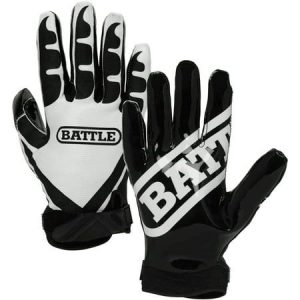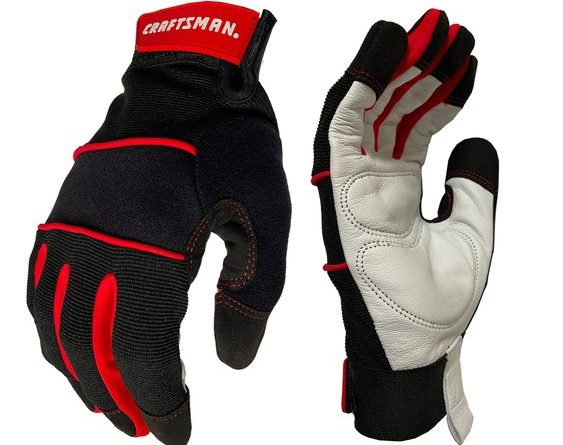A Guide to Sizing Leather Motorcycle Gloves
Leather motorcycle gloves are a crucial piece of safety equipment. They protect your hands from abrasion, impact, and the elements, allowing you to ride with confidence and comfort. But ill-fitting gloves can hinder your grip on the handlebars, reduce dexterity, and ultimately compromise safety.
This comprehensive guide dives deep into the world of motorcycle glove sizing, empowering you to find the perfect pair that fits like a second skin. We’ll explore different measurement techniques, the importance of fit, and factors to consider when selecting your ideal leather gloves.

Whether you’re a seasoned rider or a new motorcyclist, this guide will equip you with the knowledge to ensure your leather motorcycle gloves provide optimal protection and riding comfort. So, grab a measuring tape, and let’s get started!
Understanding Glove Sizing: It’s All About Circumference
Unlike clothing sizes (S, M, L), leather motorcycle gloves are typically sized based on the circumference of your hand, measured in inches or centimeters. Here’s how to accurately measure your hand for glove sizing:
- Gather Your Tools: All you need is a soft measuring tape, preferably a fabric tape measure that conforms easily around your hand.
- Measure Your Dominant Hand: While some people have slightly different hand sizes, focus on measuring your dominant hand, as it will likely be slightly larger and require a more accommodating glove size.
- Measure Hand Circumference: Wrap the measuring tape around the widest part of your hand, excluding your thumb. This is typically just below your knuckles. Make sure the tape measure lies flat against your skin but isn’t too tight.
- Take Multiple Measurements: Repeat the measurement a couple of times to ensure accuracy. If you get slightly different readings, take the larger measurement as your reference.
Size Charts: Decoding the Numbers
Once you have your hand circumference measurement, it’s time to consult the size chart provided by the specific glove manufacturer you’re interested in. Here’s a breakdown of how to interpret size charts:

- Manufacturer Variations: Keep in mind that sizing can vary slightly between brands. A medium glove from one manufacturer might not be the same size as a medium from another. Always refer to the specific size chart for the gloves you’re considering.
- Size Ranges: Size charts typically list a range of hand circumferences in inches or centimeters for each size (e.g., Medium: 8″ – 8.5″). If your measurement falls right in the middle of a range, you should be safe choosing that size.
- Borderline Measurements: If your measurement falls on the cusp of two sizes, it’s generally recommended to size up for leather gloves. Leather can feel stiff when new, and a slightly larger glove will allow for some break-in without compromising safety.
If you cannot find a size chart for the specific gloves you want, reach out to the manufacturer or retailer directly. They can often provide guidance on sizing based on your hand measurements.
The Importance of Fit: Why Proper Sizing Matters
A well-fitting leather motorcycle glove should feel snug but comfortable, allowing for some wiggle room without excessive bunching or tightness. Here’s why proper sizing is crucial:

- Safety First: Loose gloves can slip or bunch during a fall or slide, reducing the glove’s effectiveness in protecting your hands from abrasion.
- Dexterity and Control: Tight gloves can restrict finger movement, hindering your ability to operate the motorcycle controls effectively. This can be particularly dangerous in critical situations.
- Comfort for Long Rides: Ill-fitting gloves can cause discomfort and fatigue during long rides. A well-fitting glove allows for optimal blood circulation and reduces the risk of blisters or irritation.
Beyond the Numbers: Additional Factors to Consider
While hand circumference is the primary factor in leather motorcycle glove sizing, there are other considerations to keep in mind:
- Knuckle Fit: The knuckle armor should fit snugly without pinching or restricting movement. Ensure there’s no gap between your knuckles and the armor for optimal impact protection.
- Fingertip Length: Your fingertips should comfortably touch the end of the glove fingers without excess fabric extending beyond. This prevents the fingertips from bunching and reduces the risk of snagging during operation.
- Wrist Closure: The wrist closure should be secure enough to keep the glove in place in case of a fall but allow for easy on and off. Look for adjustable straps with velcro or buckles for a customized fit.
Choosing Comfort and Confidence: Selecting the Perfect Motorcycle Gloves
- Budget: Motorcycle gloves range in price depending on the materials, features, and brand. Determine your budget and prioritize features that are most important to you.
- Safety Certifications: Look for gloves that meet CE (European Conformity) or EN (European Norm) safety standards. These certifications indicate that the gloves have undergone rigorous testing and offer a minimum level of protection.
- Brand Reputation: Consider reputable motorcycle gear brands known for their quality and safety standards. Research online reviews and recommendations from fellow riders.
Beyond the Gloves: Additional Hand Protection Options
While gloves offer excellent hand protection, there are additional options to consider for specific riding conditions:

- Gauntlets: Gauntlets extend further up the forearm, providing additional protection from the elements and potential impacts. They are a good choice for touring riders or those who prefer maximum coverage.
- Hand Warmers: For cold weather riding, consider adding hand warmers to your motorcycle handlebars. These provide additional warmth and comfort for your hands, especially during long rides.
- Summer Riding Gear: In hot weather, consider lightweight motorcycle gloves made from breathable mesh or a combination of mesh and leather. These gloves prioritize airflow and comfort while still offering some abrasion resistance.
Maintaining Your Investment: Caring for Your Motorcycle Gloves
Proper care extends the lifespan and performance of your motorcycle gloves:

- Cleaning: Follow the manufacturer’s cleaning instructions. Leather gloves might require occasional cleaning and conditioning with specialized leather care products. Textile gloves can often be hand-washed or machine-washed on a gentle cycle.
- Drying: Never dry your gloves directly in sunlight or near a heat source. Allow them to air dry naturally in a cool, well-ventilated area.
- Storage: When not in use, store your motorcycle gloves in a cool, dry place away from direct sunlight. This will help prevent the materials from degrading prematurely.
Gear Up and Ride On: Invest in Your Safety with the Perfect Gloves
Motorcycle gloves are an essential investment in your safety and riding comfort. By understanding the different materials, features, and factors to consider, you can choose the perfect pair of gloves for your needs. Remember, prioritize safety first – well-fitting, protective gloves can make a world of difference in a crash.
So, visit your local motorcycle gear store or browse online retailers today to find your perfect pair of motorcycle gloves. Gear up, hit the road with confidence, and experience the thrill of riding with protected hands!
